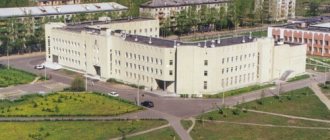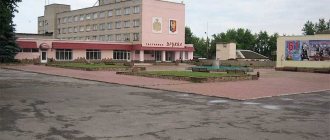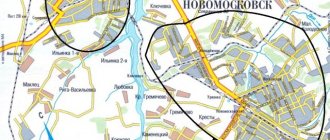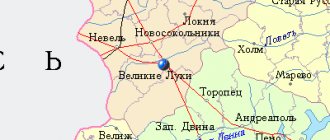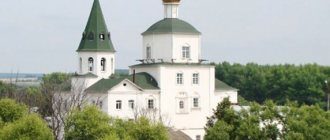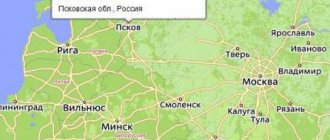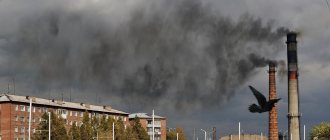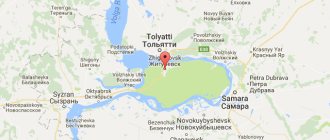The second largest city in the Kaliningrad region, Sovetsk, is known not only for its territorial characteristics. Its area is over 44 km2.
The city is famous for its history. And although Sovetsk itself appeared on the map of Russia only in 1946, the settlement was founded back in the 13th century, namely in 1288. In those years, until 1945, it was called Tilsit. This ancient city played a very important role in history - the signing of a peace treaty between Russia and France in 1807, the first schools were opened, the release from subordination of Germany in 1945, etc.
Modern Sovetsk is a large-scale transport hub and industrial center of the Kaliningrad region. Over 40,000 people have lived here since 2017.
History and locations of Sovetsk
The city is located in the northern part of the region at the place where the Tylzhi and Neman rivers connect. The climate of the city is very favorable . Warm winters, fresh summers and ample rainfall allow vegetation to blanket the entire city in greenery.
On the banks of the Neman River, in the spring of 1289, knights from the Teutonia defeated a tribe of pagans and founded a fortress on the site of the enemy’s camp. In 1313, the first crossing of the river was opened. In 1397, by order of the Prussian authorities, the fortress began to be reconstructed . The walls became stone, and construction was completed in the spring of 1409. In 1552, the fortress began to be considered the city of Tilsit. The number of residents at that time did not exceed 3 thousand people. During the reign of Alexander I, it was outside the walls of Tilsit that Napoleon Bonaparte signed a peace treaty that was of great historical significance.
During the Great Patriotic War, as a result of fierce fighting, Tilsit was practically destroyed . A quarter of the residential premises remaining in the city required serious repairs. After the end of the war, in May 1945, the first group of workers arrived in the city to restore the paper mill. The city was raised from ruins almost from scratch. The builders lived in dilapidated premises unsuitable for this purpose. During the restoration work , the main goal of the workers was to rebuild the city. Nobody thought about the safety of art monuments. Many historical buildings were lost forever. Life support facilities were erected in a short time. Local residents began to flock to the city. Over time, Tilsit was completely restored.
Jakobsruhe Park. It is considered the oldest park, which is located in the city center . The park smoothly turns into the forest. A green theater has been opened in the park, representing an open-air area. In front of the stage you can sit on sturdy benches that look like stone. The park is always calm, which attracts people to wander through its green spaces .
Our move from Siberia to the Kaliningrad region (Sovetsk)
Hi all!
I would like to finally share my story of moving, the first in my adult and conscious life.
I arrived in Omsk in 2007, right after graduating from school, and I vaguely remember exactly how the move went. My classmate, who also decided to enroll in an Omsk university, and I bought tickets, and for the first time, I rode the train myself, without my parents. I don’t remember how I transported things.
But I remember in detail the move I organized from Omsk to the Kaliningrad region, the city of Sovetsk. The idea of moving initially came not from me, but from my boyfriend (at that time we were not married). He applied that he would like to transfer, and almost 9 months later he received a call saying that he was expected to be hired.
Sovetsk: Victory Square, tram car - mini-museum
We started preparing for the move about 4 months in advance, when we were informed that we needed to collect documents. I read reviews from those who moved, found out about sending things, renting housing, tickets for us, and also found out the nuances of traveling for a cat. Thanks to various forums and sites, including this one, we have decided on the main issues.
Firstly, we decided to fly by plane, since traveling by train takes a very long time. I periodically monitored the cost, and in the end we bought two Aeroflot plane tickets with a transfer in Moscow for 18,740 rubles.
Secondly, I learned that in order for a cat to fly away with us, a number of conditions must be met:
- the cat has an international passport;
- availability of necessary vaccinations against rabies, received no later than 20 days before the date of the planned flight;
- obtain a veterinary certificate of the established form, which is issued only by state veterinary clinics, and valid for 5 days from the date of issue;
- the presence of a carrier with a hard bottom, having dimensions not exceeding the permissible ones;
- separate paid ticket. At Aeroflot it costs 50 euros, and is paid directly during registration.
In order for the cat to be able to fly with us in the cabin, we must make a request to the airline in advance. If permission is not given, then the cat flies in a special compartment of the luggage compartment. The cost of the ticket is not affected by whether the animal flies on board or in luggage.
Thirdly, we decided on the method of transporting things. We chose the PEC company because many people mentioned this company in their reviews, and the majority were satisfied with the services provided. Whoever sent it basically knows the order. Let me just say that oral consultations with company specialists turned out to be pointless. I incorrectly told them the dimensions of things, and accordingly they told me the wrong amounts. When we took the things to the warehouse and completed all the paperwork, we were told the true dimensions and amount - 9 pieces, 95 kg, 0.98 m3 (1.27 m3 with rigid packaging), 5,500 rubles with delivery to Sovetsk.
Cathedral of the Three Saints in Sovetsk
Fourthly, we found housing. We searched through Avito. We chose it based on the photo, found the owner, made an advance payment and were calm.
We have lived in Sovetsk for a little over a year. I didn’t apply for a job, so there’s not much to say about employment. But! I periodically looked through vacancies on the relevant websites - I didn’t find anything in my specialty (law), in the local newspaper - for the whole year I saw the required advertisement once. Based on the feedback from local residents, I realized that if you have connections and acquaintances, it’s easier to get a job.
In the park
The climate suits me. I've never been sick here. But during my trips to Omsk throughout the year, I was sick on each of them. During the rains, which don’t happen so often here, there’s often just drizzle, a little puddles and mud. Last winter there was practically no snow. It fell out 6 times, of which 2-3 times it stayed for a couple of days before melting. For me, a winter without snow was a shock))) Everything begins to turn green and bloom early, and this beauty lasts until October. In October, all the leaves begin to turn yellow, fly off, and it becomes very gray and dull outside.
Square
Prices for food and related products, it seems to me, are generally the same as in Omsk. Some things are really more expensive, some things are cheaper. Thanks to changes in the dollar and euro exchange rates in the winter of last year, they, of course, rose sharply. Over the course of the year, I noticed that prices were “jumping”, but this was apparently some kind of marketing trick.
On the shelves you can see goods from Poland and Lithuania; they were a novelty for us, of course, when we moved, but now the eye has become accustomed to it and is not surprised. On New Year's holidays, we sent parcels to family and friends with “overseas” sweets so that they could try them too.
Entrance to the city park
We did not deal with the issue of buying a home, only renting. On average, a 1-room apartment, furnished and in good condition, costs 5,000 rubles per month. 2-room – already 7000-9000 rubles. It's more expensive in Kaliningrad. Utility bills are higher than in Omsk. Every month we give receipts to the owner of the apartment so that she pays; I have no information about the tariffs.
View of the courtyard where we rent an apartment
According to the tariffs, for 2 people with registration a communal apartment in the summer would cost about 2500-3000 rubles, in the winter 3500-4000 rubles. If you need more precision, I can add the data for this month later.
It seems to me that everyone needs to visit the Kaliningrad region at least once. There is history in every building, incredibly beautiful nature!
Military registration and enlistment office building
Our Sovetsk is small in area, with a population of 43,000, and is the second largest city in the region after Kaliningrad. There are no large shopping centers or hypermarkets here. Shops are mainly on the first floors of houses. After a city of millions, this is surprising)
Victory Square - the building of the Palace of Culture, the city administration, the monument to V.I. Lenin. The pedestrian street starts from this place
For unassuming people, the assortment is sufficient; the rest go shopping to Kaliningrad, Poland. There is a large market, and small retail outlets where older people lay out their goods - food, clothing, books, and so on.
A lot of greenery! There is a large park with a monument to Queen Louise, a small pond with ducks and benches to sit, relax and enjoy nature.
Monument to Queen Louise
There is a large city lake where you can feed not only ducks, but also swans.
View of the city lake
Old German houses are in a shabby state, but some are being restored little by little. Five- and nine-story block buildings also want renovation, and many have posters pasted on them saying they are next in line.
The old lyceum building, now there is an elementary school there, as I understand it
The roads are narrow for my taste. A lot of paving stones. There are few pedestrian crossings, which is also for my taste. There are only 3 traffic lights in the whole city, not a single one works) The route is, of course, gorgeous!
Paving stones
There are shuttle buses running around Sovetsk, but I don’t know how much it costs. I walk, sometimes by taxi. For me, everything here is within walking distance! Yes, and breathing unpolluted air is worth a lot. Taxi in the main part of the city costs 50 rubles, in remote areas 80 rubles.
An express train departs from the bus station every half hour to Kaliningrad, the ticket costs 220 rubles, the journey takes approximately 1 hour 45 minutes. There is also a railway station, but I didn’t find out where you can go from there, I heard that trains go to Kaliningrad.
One of the few traffic lights) never works
There is also nothing to say about schools and kindergartens - there are no children, but it seems to me that there are enough kindergartens! There is a lyceum, a gymnasium, and schools.
New registry office building, previously the department was located in the administration
I had a chance to go to a hospital, namely a clinic. The audience, like everywhere else, are pensioners. Thank God, my husband found a good, sane therapist. I went to paid clinics, the cost of ultrasound and initial appointments was less than in Omsk.
Children's park
Over the course of a year, we got used to the terrain, the climate, the situation, and life in a calm and quiet town, but Sovetsk never became ours, our hometown, where we would want to take root.
Victory Park
The main city park, which was founded in 1975. This is vacation spot Next to the park there is a mass grave in which all the found defenders of the city and its surroundings are buried. Victory Park traditionally hosts events dedicated to the celebration. Victory Day.
Population
| Population | ||||||
| 1959[6] | 1970[7] | 1979[8] | 1989[9] | 1996[10] | 1998[10] | 2000[10] |
| 10 099 | ↗11 024 | ↘10 432 | ↘10 077 | ↘9800 | ↘9500 | ↘9100 |
| 2001[10] | 2002[11] | 2005[10] | 2006[10] | 2007[10] | 2008[10] | 2010[12] |
| ↘8800 | ↘8770 | ↘8400 | ↘8100 | ↘7900 | ↘7700 | ↘7536 |
| 2011[10] | 2012[13] | 2013[14] | 2014[15] | 2015[16] | 2016[17] | 2017[18] |
| ↘7500 | ↘7442 | ↗7452 | ↘7363 | ↘7347 | ↗7360 | ↗7440 |
| 2018[19] | 2019[20] | 2020[21] | 2021[1] | |||
| ↘7405 | ↘7358 | ↘7337 | ↘7246 | |||
As of January 1, 2022, in terms of population, the city was in 779th place out of 1,116[22]cities of the Russian Federation[23].
Villa Franka
The most recognizable building in the entire city. The building was built at the end of the 19th century, owned by the merchant Frank. This building was used by a merchant as rental housing . For some time, a local pastor lived in the villa, which is why the villa received the name Pastor’s Villa.
Queen Louise Bridge
The bridge connects the banks of the Neman River. On the other side is Lithuania and a visa is required . Both pedestrians and motorists are allowed to cross the bridge. Before the onset of World War II, there was also tram traffic on the bridge. Currently, the bridge is used as a border crossing point into the territory of a European state.
Links[edit]
Notes[edit]
- ^ a b Federal State Statistics Service (2011). “All-Russian Population Census 2010. Volume 1" [All-Russian Population Census 2010, vol. 1]. All-Russian Population Census 2010 [All-Russian Population Census 2010]
. Federal State Statistics Service. - "26. The size of the permanent population of the Russian Federation by municipalities as of January 1, 2022". Federal State Statistics Service. Retrieved January 23, 2022.
- ^ abc Resolution No. 639
- ^ abc Law No. 376
- "On the Calculation of Time". Official Internet portal of legal information
. June 3, 2011. Retrieved January 19, 2022. - Post office. Information and computing center of OASU RPO. ( Post office
).
Search for postal service objects ( postal Search for objects
) (in Russian) - M. Kaemmerer (2004). Ortsnamenverzeichnis der Ortschaften jenseits von Oder u. Neiße
(in German). ISBN 3-7921-0368-0. - Belzyt Leszek (1998). Sprachliche Minderheiten im preussischen Staat: 1815–1914; die preußische Sprachenstatistik in Bearbeitung und Kommentar . Marburg: Herder-Inst. ISBN 978-3-87969-267-5.
- Karabeshkin Leonid; Wellmann, Christian (2004). Russian Domestic Debate on Kaliningrad: Integrity, Identity and Economics
. Münster: LIT Verlag. paragraph 35. ISBN 9783825879525. - Will the Tilsit district appear on the map of the Kaliningrad region? TVNZ
. March 24, 2010. Retrieved October 6, 2022. - ↑
Stolyarov, Bulat (March 25, 2010). Renaming a city is expensive, you need to clearly understand why.
Snob.ru
(in Russian). Retrieved October 6, 2022. - PONARS Eurasia Memo # 16. “Border security between the EU and Russia. Stereotypes and reality" (PDF). (55 Kb])
- “All-Union Population Census of 1989. The actual population of the union and autonomous republics, autonomous regions and districts, territories, negative phenomena, urban settlements and villages, our partners.” sovetsk.gov39.ru
(in Russian). Sovetsk. Retrieved February 6, 2022. - ↑
Armin Mueller-Stahl Ehrenbürger seiner Heimatstadt Berliner Zeitung, 8 December 2011 (in German) - ↑
Tolstoy, Lev (1949).
War and Peace
. Garden City: International Collectors Library. pp. 204, 235.
Queen Louise statue
The monument is located in the center of the oldest park. Its height is 8 meters. Louisa, wife of King William III. The monument was recreated from old photographs. a plaster football player was installed on the site of the Queen's monument , which eventually collapsed. The European Union provided a large sum for the revival of the former monument, which was done with success.
Famous people[edit]
Max von Schenkendorff
Frank Wisbar 1959
John Kay
- Daniel Klein (1609–1666), Lithuanian pastor and grammarian
- Johann Christian Jacobi (1719–1784), German oboist
- Max von Schenckendorff (1783–1817), German poet and writer.
- Franz Meyen (1804–1840), German botanist
- Hans Victor von Unruh (1806–1886), German politician and technician
- Wilhelm Voigt (1849–1922), inspiration for "Captain Köpenick"
- Margarete Poehlmann (1856–1923), German educator and politician, first woman to speak in the Prussian parliament.
- Gustav Kosinna or Kosina (1858–1931), archaeologist
- Johanna Wolf (1858–1943), German writer
- Max Shervinsky (1859–1909), German-born architect who worked primarily in Riga, Latvia.
- Emil Wichert (1861–1928), German geophysicist
- Raphael Friedeberg (1863–1940), German physician and politician.
- Max Gülstorff (1882–1947), German actor
- Karl Brinkmann (1885–1954), German sociologist and economist
- Franz Scheydy (1890–1942) Wehrmacht general during World War II.
- Walter Weiss (1890–1967), German general during World War II.
- Friedrich Schröder Sonnenstern (1892–1982), illustrator
- Dick Shikat (1897–1968) German professional wrestler and world heavyweight champion
- Frank Wisbahr (1899–1967) German director
- Karl Hermann Martell (1906–1966), German actor
- Franz Abromeit (1907–1964), SS officer, Reichssicherheitshauptamt ( Judenreferent
) - Joachim Sadrosinski (1907–1944), officer and resistance fighter.
- Erna Dorn (1911–1953) victim of injustice in the GDR.
- Siegfried Gratchus (1916–1943), SS Oberscharführer, killed during the uprising at the Sobibor extermination camp.
- Johannes Bobrowski (1917–1965), German writer
- Werner Abrolat (1924–1997), German actor
- Günter Wyshetzky (1925–1985), German-Canadian physicist
- Armin Müller-Stahl (born 1930), German actor, honorary citizen since 8 December 2011.[16]
- Sabine Bethmann (born 1931), German actress
- Jürgen Kurbühn (1940–2014), football player
- Klaus-Dieter Zieloff (1942–2011), football player
- John Kay (born 1944), lead singer of the late 1960s rock band Steppenwolf
- Edgar Frese (1944–2015), German founder and leader of the electronic music group Tangerine Dream
- Victor Ivriy (born 1949) Soviet, Canadian mathematician
- Andrei Sosnitsky (born 1962) Belarusian professional football coach and former player
Elk
the main symbol of the Prussian state . A figure of this animal was installed in Sovetsk. After the victory, the elk figure was taken to the Kaliningrad Zoo. But in 2007, the elk returned to his city, where he delights viewers to this day.
Museum of Military Equipment
The museum has been open since May 2014. Located in the fresh air . Next to each piece of military equipment there is a description of it. The area around the museum has been landscaped; anyone can see any of the samples.
Every guest arriving in the city of Sovetsk is simply obliged to try the local cheese , the taste of which is known far beyond its borders. In the cheese factory, which is 10 km away. from Sovetsk they conduct excursions and conduct lectures on the foundation of cheese making.
Story
- 1793 the village of Nikolskoye is indicated in this place on maps of the Russian Empire.
- On October 26, 1949, during the construction of the Shchekino State District Power Plant, the village was classified as a workers’ settlement and given the name Sovetsky
[5]. - On December 31, 1954, the working village of Sovetsky
was transformed into a city of regional subordination and given the name - the city of
Sovetsk
.
Upinsky
is included in the city limits of the city of Sovetsk . - Since 2006, the city has formed a municipal formation (urban settlement) “Sovetsk City”.
